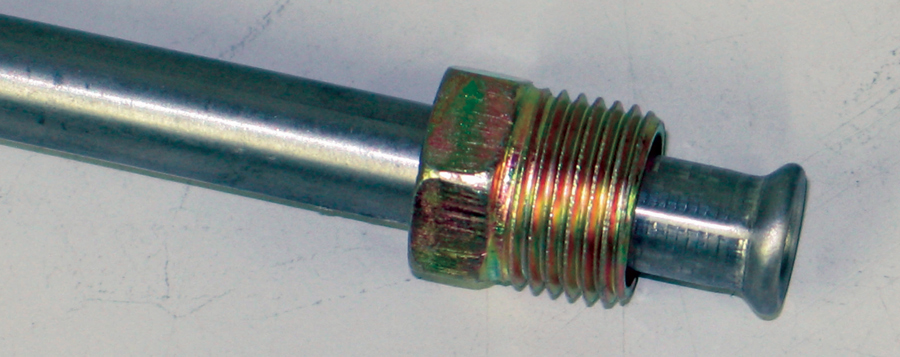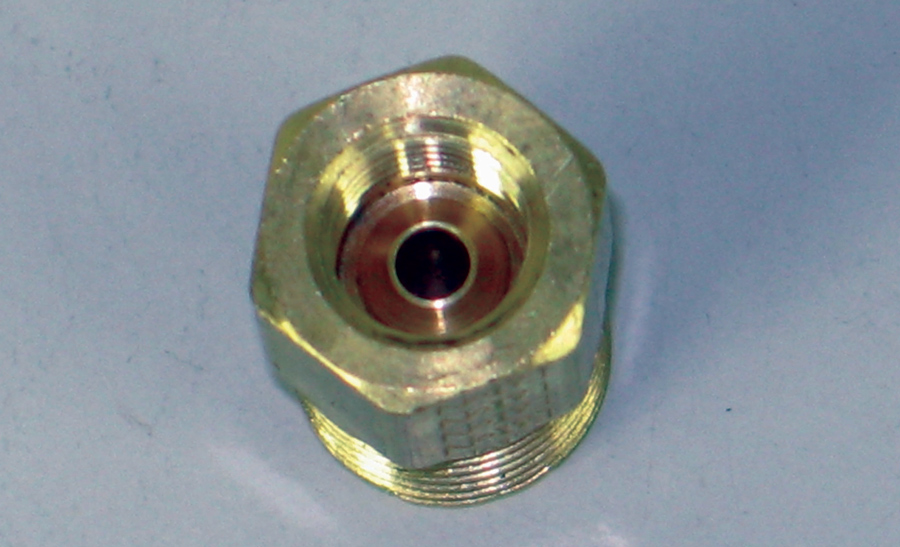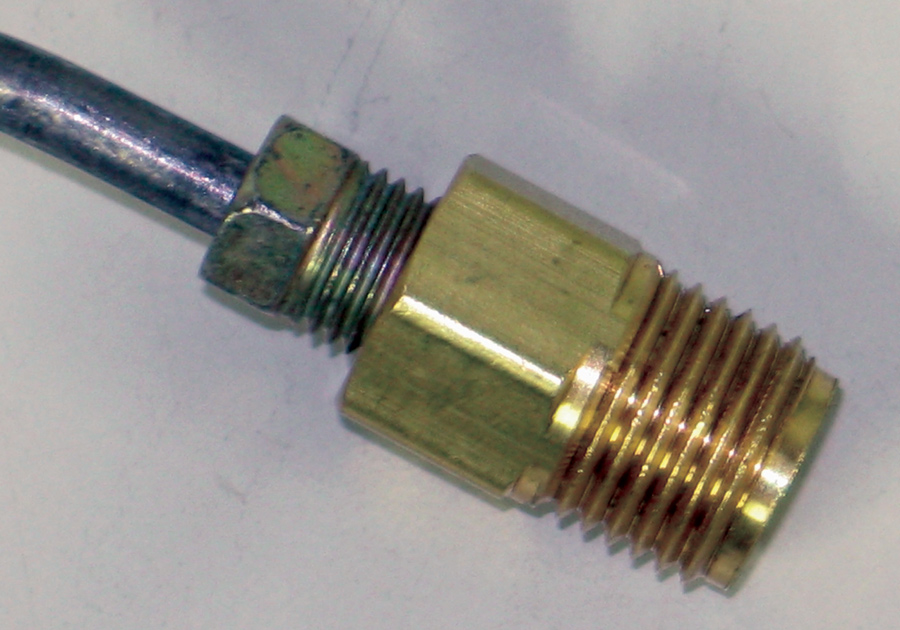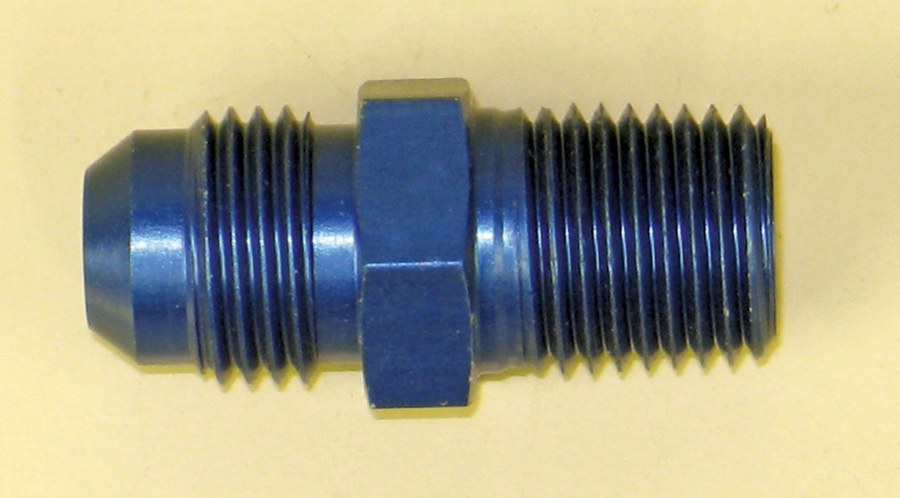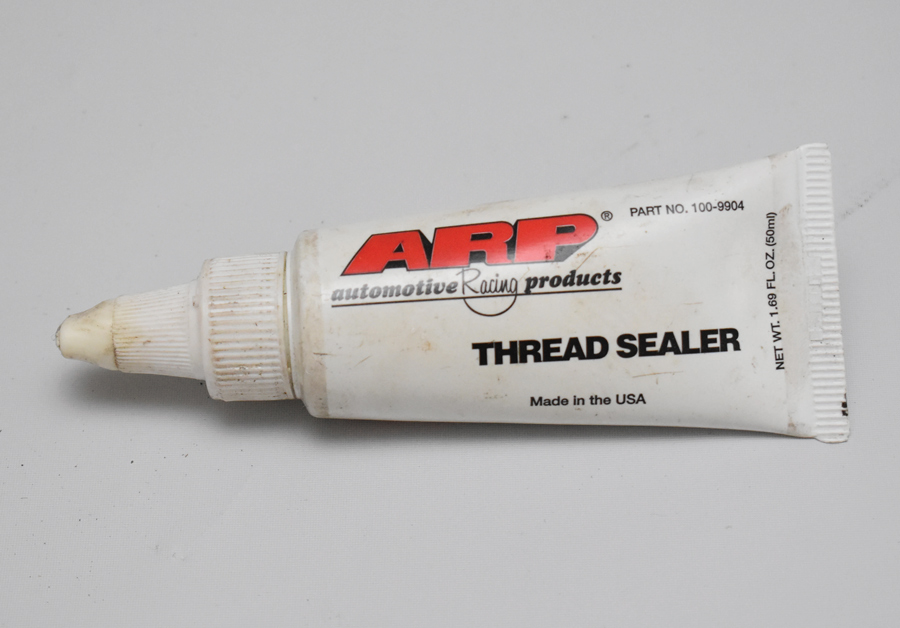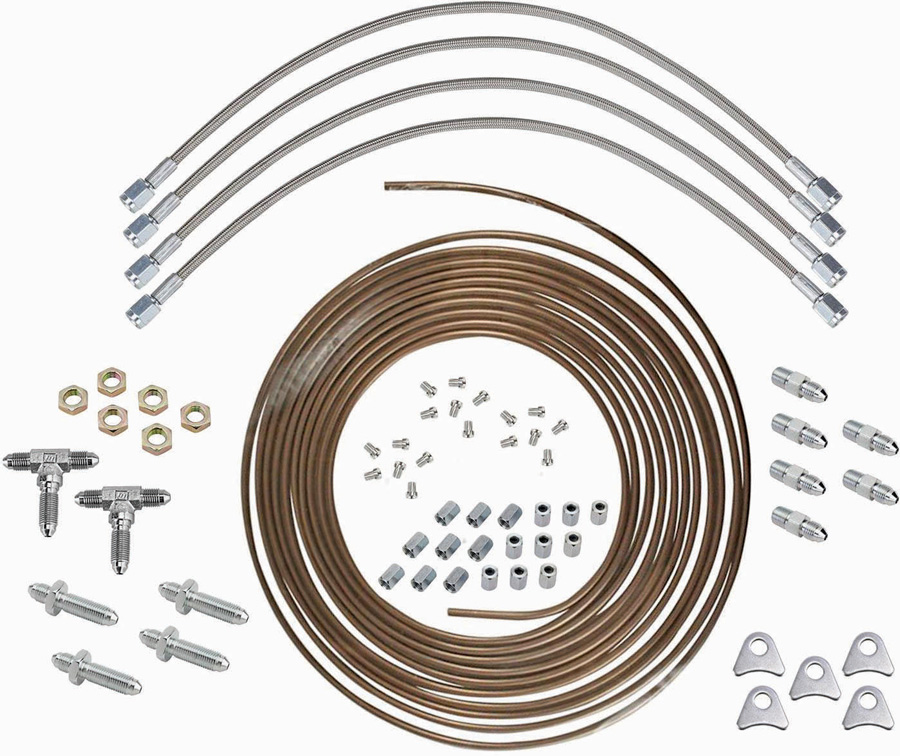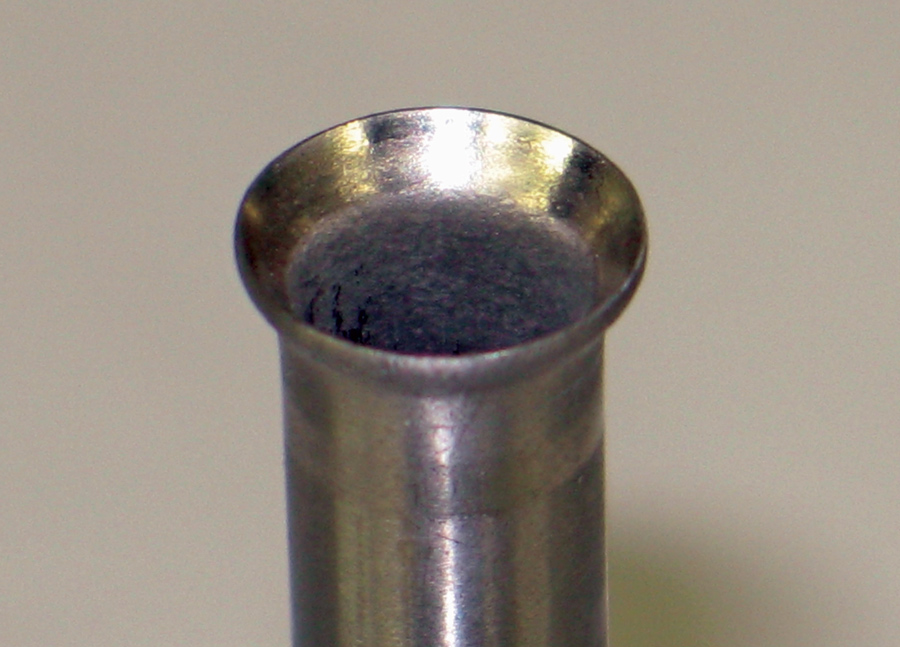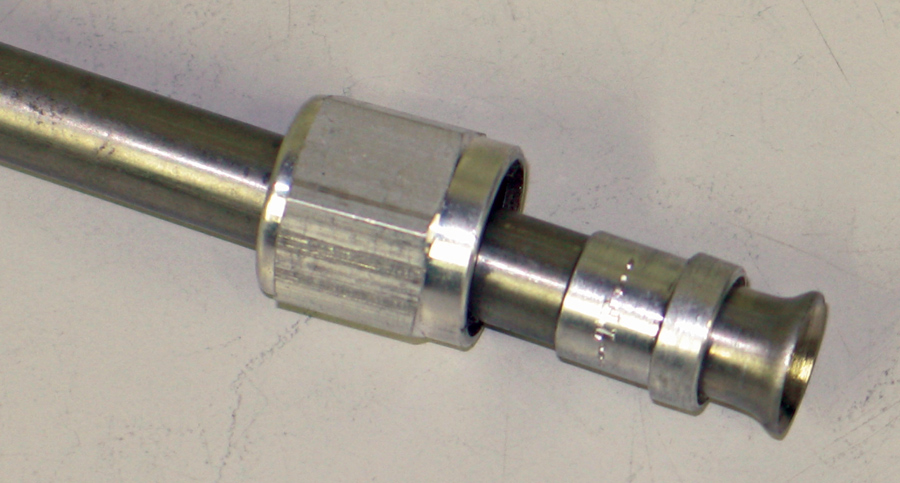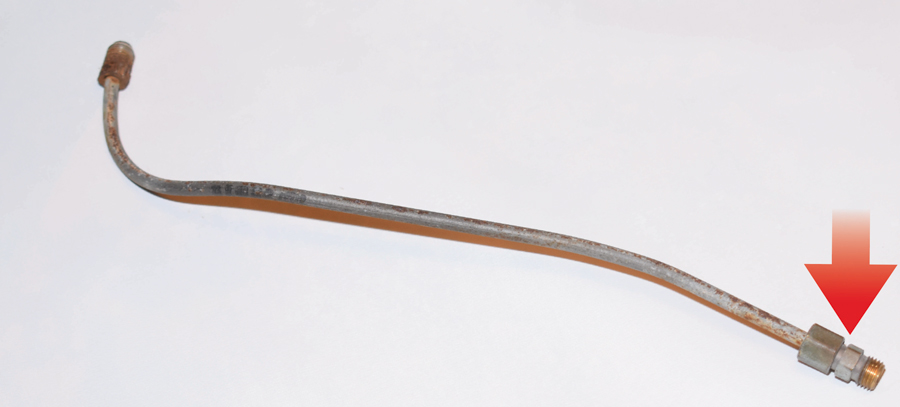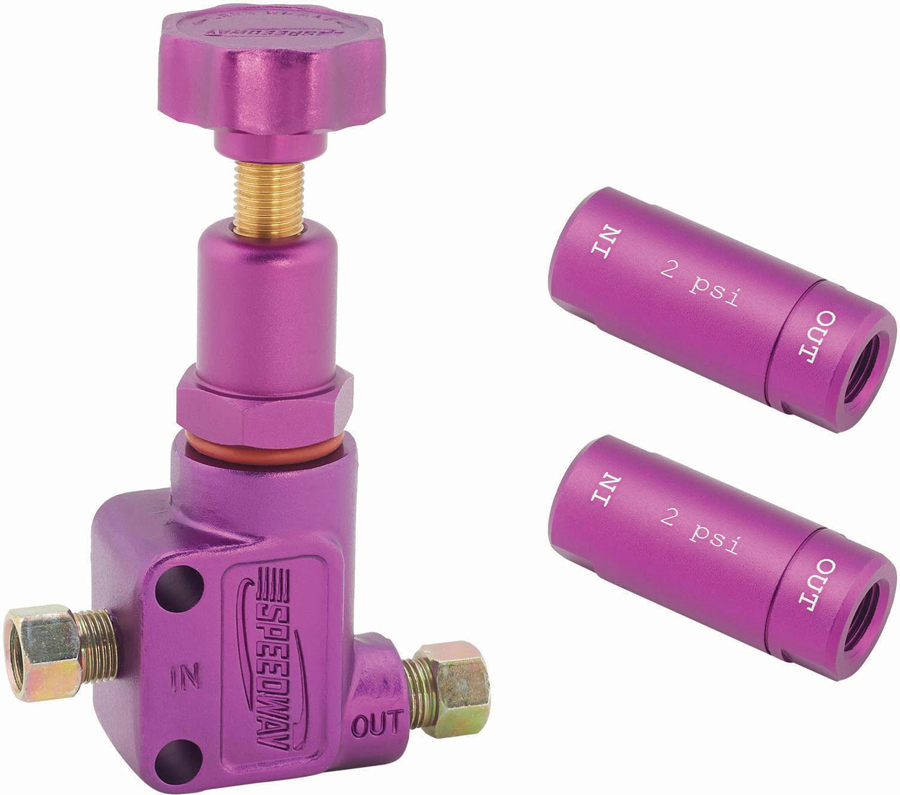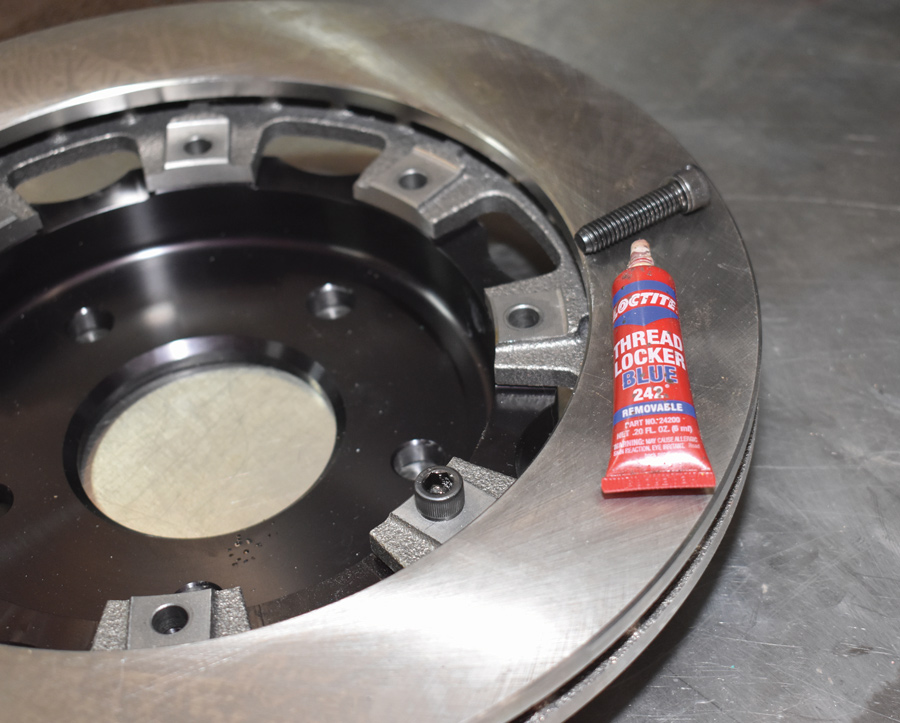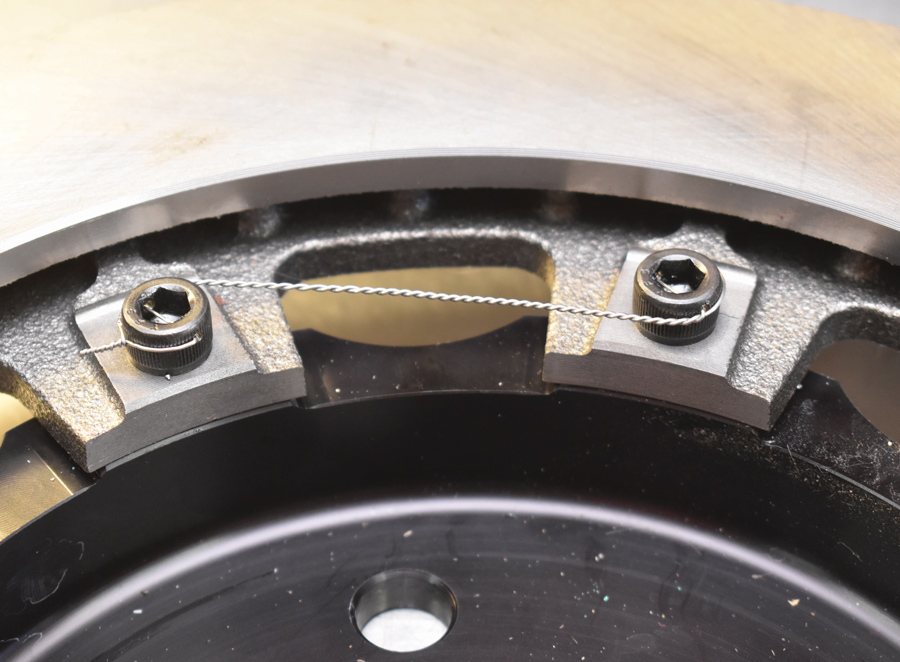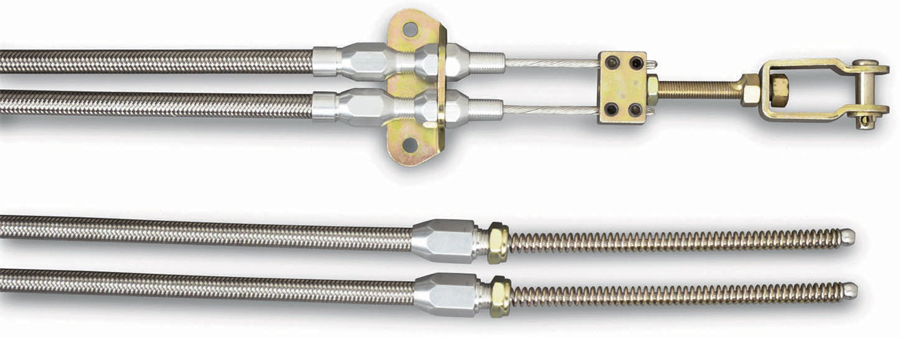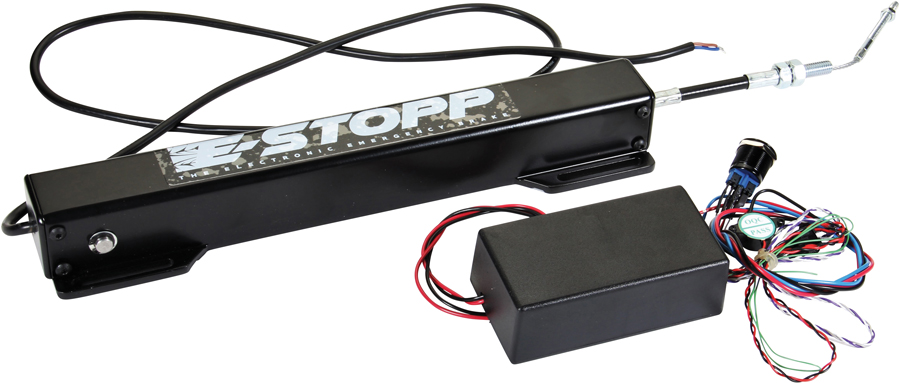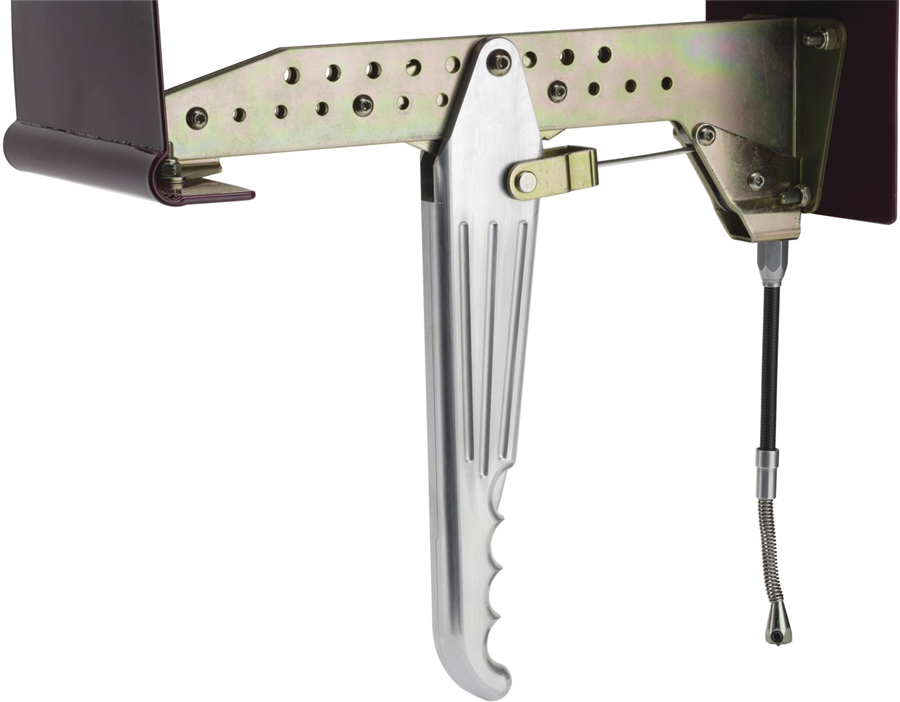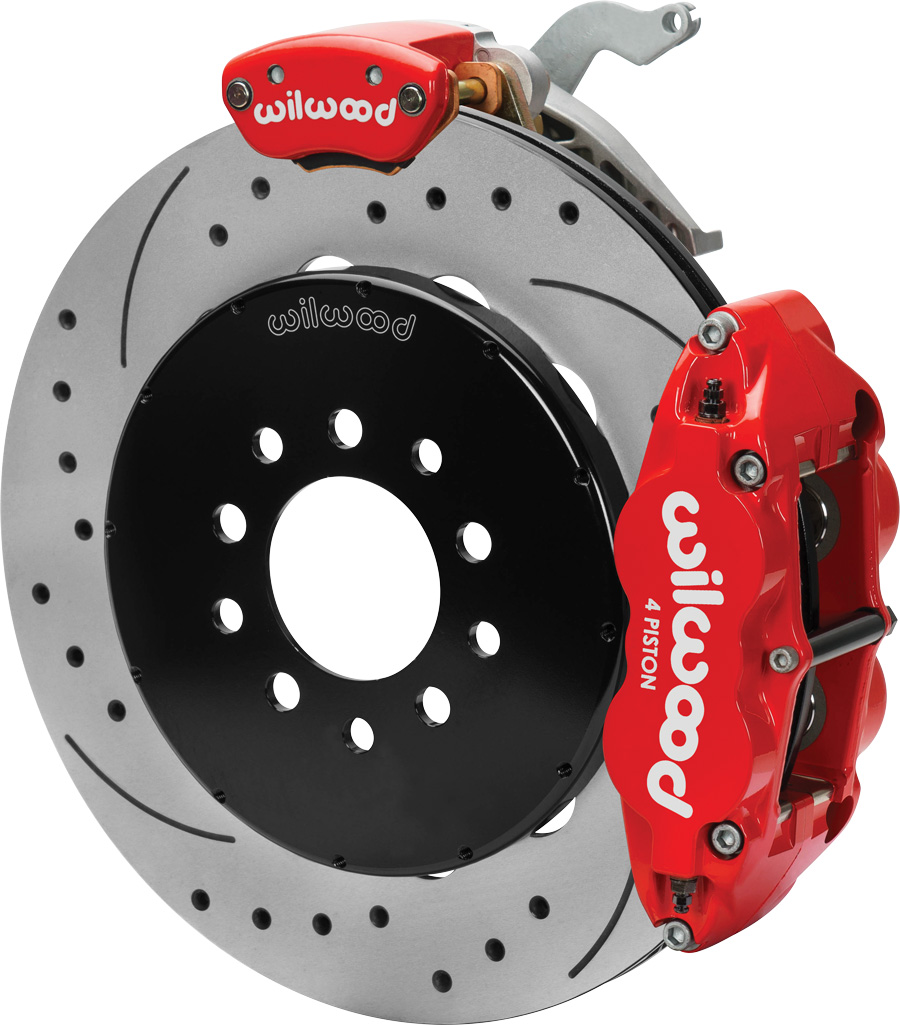Modern Rodding Tech
InTheGarageMedia.com
1. The ultimate brake blunder—make a perfect flare and forget to put the nut on the tubing.
1. The ultimate brake blunder—make a perfect flare and forget to put the nut on the tubing.
 Photography by The Author & Courtesy of Wilwood, Classic Performance Products & Speedway Motors
Photography by The Author & Courtesy of Wilwood, Classic Performance Products & Speedway Motorshere are some shortcomings in a hot rod you can learn to live with. An occasional rattle, a window crank that comes off in your hand, or a gas gauge that never seems to be quite right. One thing you may not live with is a malfunctioning brake system. If you are building or buying a car, here are some things to consider:
There are two common misconceptions about brake lines. The first is that there is a relationship between brake line size and hydraulic pressure—not true. Pressure in the brake system is created by the master cylinder and the brake lines deliver it. Brake lines are most often 3/16 or 1/4 inch in diameter and the only difference is the amount of fluid delivered. The bigger tubing will carry more volume, so 1/4-inch line may be preferable in some instances, disc brake calipers with large piston displacements, as an example.
The second misconception is that stainless brake lines cannot be double flared. It is true that some stainless steel tubing will crack when forming double flares, however it can be done if the appropriately annealed tubing is used.
While they aren’t used on production automobiles, AN fittings are often found on hot rods and race cars. (The reference “AN” stands for Army/Navy and it’s a system that was developed by the government to ensure interchangeability and compatibility of parts made by various manufacturers.) AN fittings use tubing with 37-degree single flares with reinforcement sleeves (37-degree flares will also be found on JIC hydraulic fittings).
The AN system uses a number to identify the various sizes of metal tubing and the corresponding fittings, and the same numbers are also assigned to the hose and their ends. Called dash numbers, they equate to 1/16 inch. As examples, -3 line is 3/16 inch, -8 is 1/2 inch, a dash 3 fitting is also 3/16 inch.
A typical combination would be a master cylinder mounted below the floor that is lower than the disc brake calipers. As a result, fluid will tend to drain out of the calipers and back into the master cylinder. The result is the brake pedal has to be pumped to bring the pads back in contact with the rotors, not a great situation in a panic stop. The cure would be a 2-pound residual pressure valve that would maintain enough pressure to prevent the calipers from draining and keep the pads close to the rotors, but not enough pressure to make the brakes drag. In the case of a firewall-mounted master cylinder a residual pressure valve is not normally required for disc brakes.
When drum brakes are used a higher-pressure residual valve is required. Due to the strength of the return springs, a 10-pound residual valve is required to maintain sufficient line pressure to keep the wheel cylinder cups expanded. This prevents air from being drawn into the system, creating a spongy brake pedal and allows the brakes to react quicker with a firm pedal. It should be noted that most OEM drum and disc/drum master cylinders have integral residual valves in the outlet to the drum brakes.
Proportioning valves are very often a part of a hot rod’s brake system They modulate the pressure in the hydraulic system to minimize rear wheel lockup found in hard braking and to compensate for differences in braking conditions in front disc/rear drum systems. Pressure adjustments usually range from 100-1,000 psi and provide a maximum decrease of 57 percent in line pressure, which allows fine-tuning of the front-to-rear braking balance by proportionally decreasing the rear (or in some cases the front) brake line pressure. Adjustments are made by a knob with an arrow indicating the direction required to decrease line pressure. With the knob rotated all the way out (counterclockwise) there will be the maximum pressure reduction (usually around 57 percent). Rotating the knob clockwise will increase line pressure, up to 100 percent.
Often found on OEM systems with disc brakes are metering valves, they don’t allow pressure to the front disc brakes until the pressure at the rear drums overcomes the brake shoe springs. At this point the valve opens to allow full pressure to the calipers. In some applications a combination valve is used that incorporates metering and proportioning functions into one valve. They often have warning light provisions to indicate if one half of a dual brake system has lost pressure.
Follow a few simple concepts, use the proper components, and perform regular inspections and maintenance, and you’ll avoid making any brake blunders.


